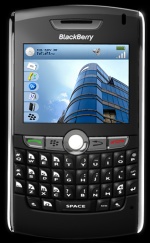The dream of the universal power connector becoming a reality

I've dreamed of a universal power connector for small electronic devices for years, but I've come to the conclusion that it will never happen because there is simply too much money to be made in selling proprietary power adapters. But in a strange turn of events, I may be getting my wish after all. USB has seemingly become the de facto standard for delivering power to small electronic devices that need less than 2.5 watts to charge. Ethernet has become the de facto standard for powering devices that need less than 15 watts with the 802.3af standard.
USB chargers are getting almost as common as a cigarette charger in automobiles. Here's a list of things that are starting to convert over to this standard:
- iPods
- Portable GPS
- Almost all MP3 players
- Skype phones, like the Belkin Wi-Fi Phone
- The new sleek Blackberry 8800 phone

Power over Ethernet with the 802.3af standard and standard CAT-5 cabling has come way down in price. We've gotten as low as $20 per port on a 10/100 switch with gigabit uplinks, compared to $80 per port just a few years ago. Devices like IP phones have all standardized on 802.3af, and other devices, like IP video surveillance cameras and wireless access points, all pull power off 802.3af Power over Ethernet. We even have specialized low-power LCD panel computers that work off an 802.3af port and get their power and data connectivity over a single CAT-5 cable.
I just wish my laptop could pull some power off of it, even if it's not enough to keep the laptop going indefinitely, because at least it would prolong my battery time. In situations where my laptop is off or suspended, I might even be able to slow-charge my notebook if I forgot my power adapter. I can't count how many times I've found myself without a power adapter for my notebook, and sometimes it's just too inconvenient to plug in an AC adapter. There's even an 802.3at standard under development that can provide up to 56 watts of power, which is enough to power a notebook or energy-efficient PC. We will all welcome the day we're free of the hundreds of proprietary AC adapters hanging off multiple power strips. Who knows, some day we might even get some powered USB and or Power over Ethernet ports built into the wall socket.